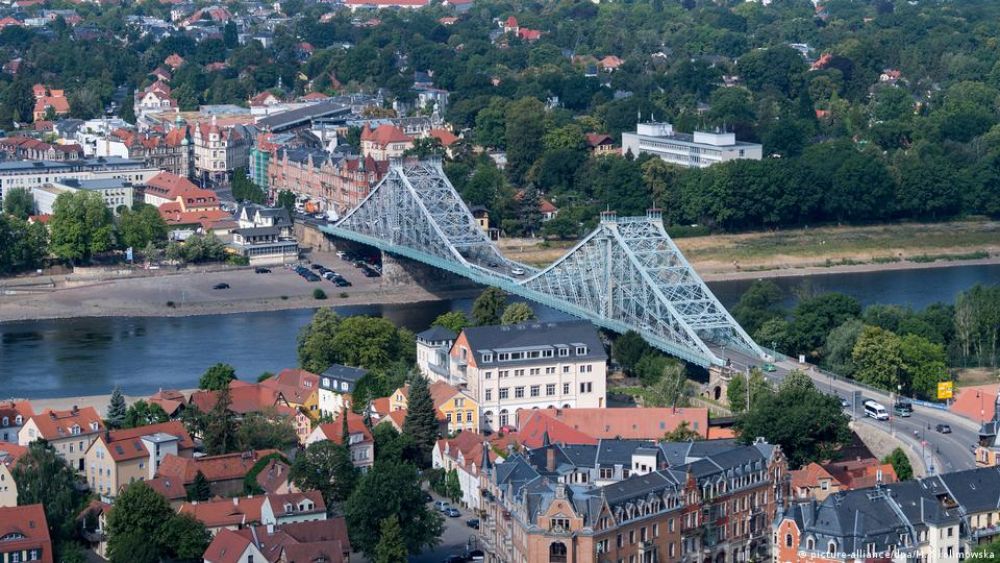

The Blue Wonder, locally known as the Loschwitzer Brücke, is a historic bridge in Dresden, Germany, crossing the Elbe River and connecting the residential areas of Blasewitz and Loschwitz. This iconic structure has a rich history and has contributed significantly to the local tourism industry.
Constructed between 1891-1893, the Loschwitzer Brücke was an engineering marvel of its time. Upon completion, its unique blue color and sophisticated steel design quickly garnered it the nickname "Blue Wonder." With a span of 280 meters without any river piers, it was considered a landmark achievement in bridge construction and claimed to be the longest cantilever truss bridge in Europe.
Initially facilitating the growth of the surrounding suburbs, the bridge survived the bombings of World War II, thanks to local legends of courageous citizens who thwarted its planned destruction. The Blue Wonder has since become a symbol of resilience and continuity in Dresden, withstanding both the test of time and historical conflicts.
Dresden, renowned for its architectural and artistic heritage, quickly recognized the potential of the Blue Wonder as not only a functional structure but also a tourism asset. By the early 20th century, the bridge was already an integral part of city tours, with travelers marveling at its grandeur and picturesque setting.
Post-war reconstruction efforts in Dresden saw a renewed focus on preserving the city's cultural monuments, with the Blue Wonder receiving necessary repairs and maintenance to restore its original luster. This preservation allowed it to become an enduring attraction for those interested in engineering, history, and breathtaking city views.
In recent years, visitor engagement around the Blue Wonder has expanded beyond traditional sightseeing. The surrounding areas now offer various activities such as river cruises, cycling along the Elbe cycling routes, and enjoying the scenic viewpoints along the bridge's walkways. The bridge is particularly noted for its stunning visage during sunset, making it a favorite for photographers and romantic strolls.
Ecotourism has also gained traction, with tourists showing an increased interest in sustainable travel. Dresden's well-preserved natural environments alongside urban excursions make venues like the Blue Wonder popular for those looking to balance cultural enrichment with eco-friendly practices.
Today, the Blue Wonder stands as a testament to Dresden's enduring charm and historical significance. It continues to attract visitors from around the world and serves as a bridge not just between two riverbanks, but between the city's past and present.
For those interested in visiting the Blue Wonder, there are several points of interest and annual events in the vicinity that make the trip especially rewarding. Visitors can explore nearby attractions such as the Schiller Garden, the Dresden Funicular Railway, and the Dresden Suspension Railway that enhance the experience of the bridge within its urban context.